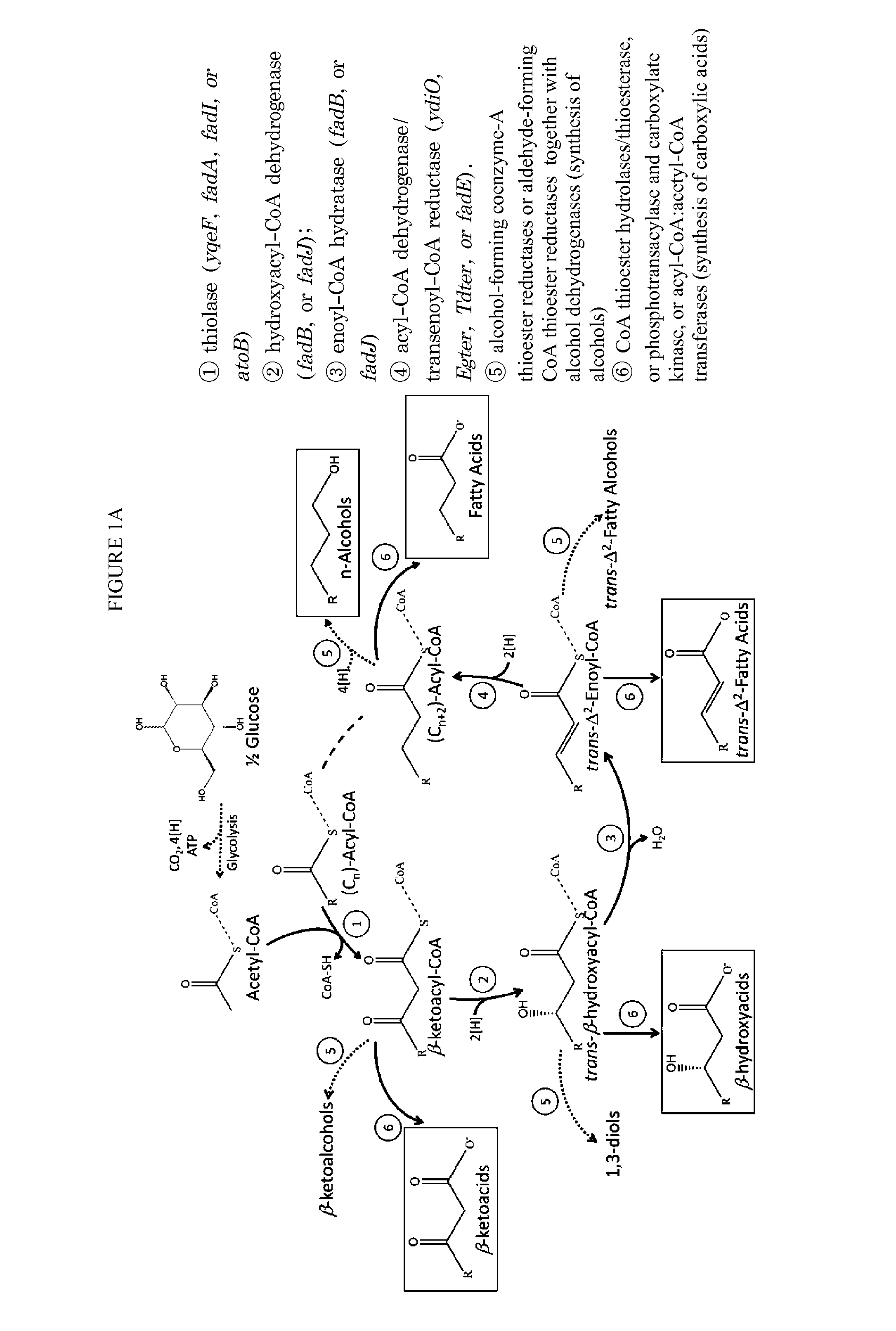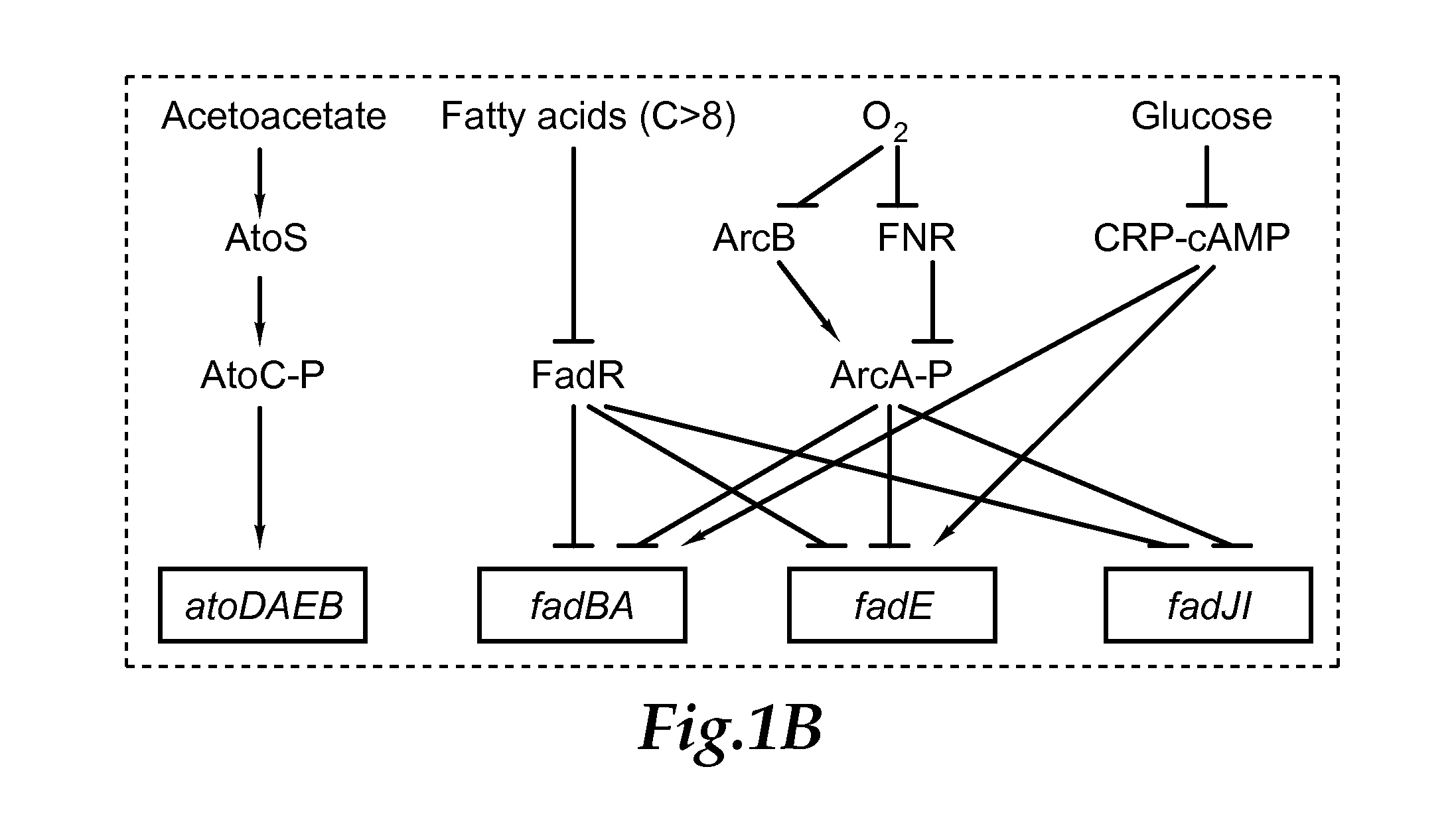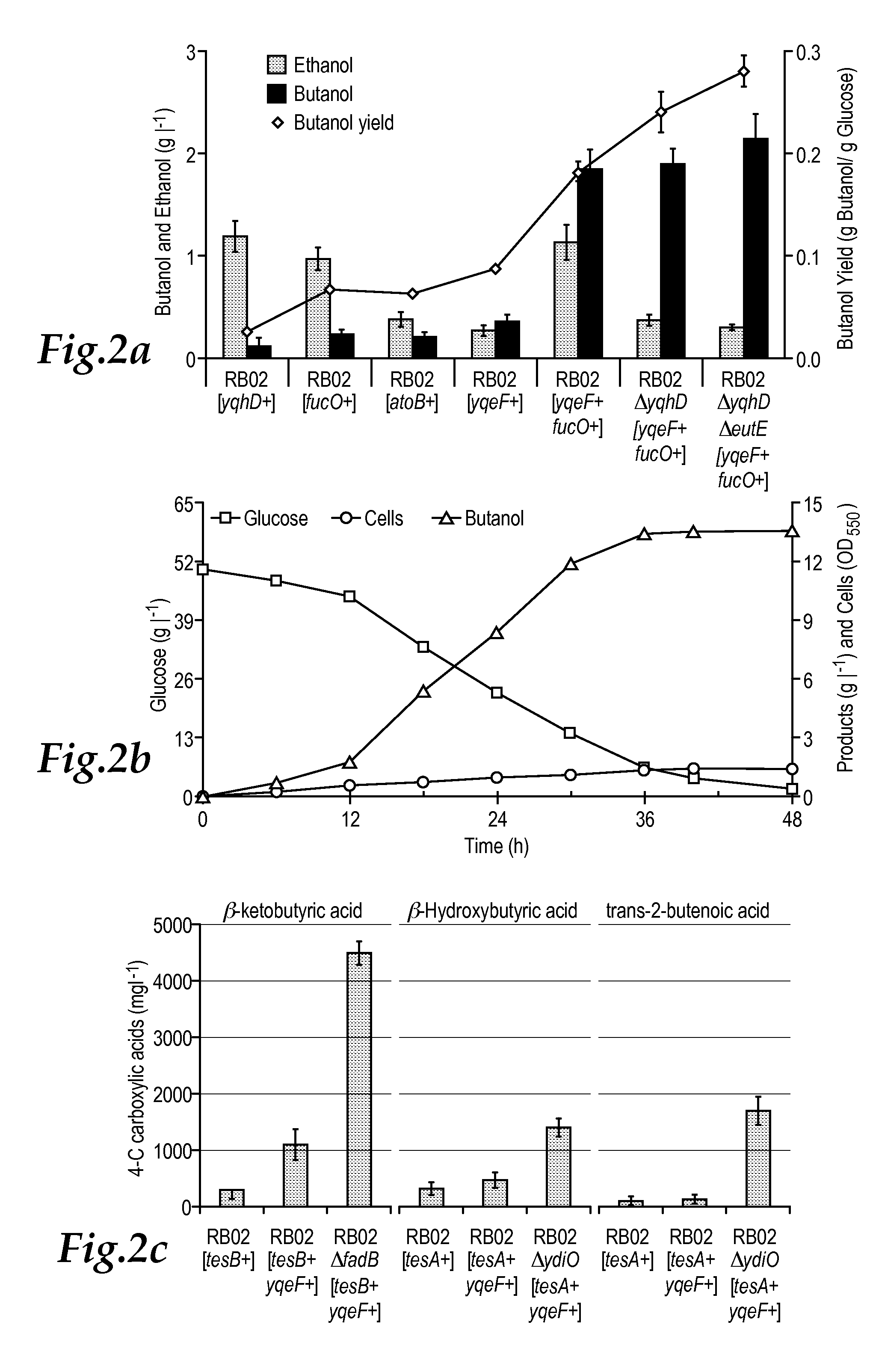Reverse beta oxidation pathway
a beta oxidation and reverse beta technology, applied in the field of recombinant microorganisms, can solve the problems of high hygroscopicity, high vapor pressure, and unsatisfactory fuel of ethanol
- Summary
- Abstract
- Description
- Claims
- Application Information
AI Technical Summary
Benefits of technology
Problems solved by technology
Method used
Image
Examples
example 1
Materials and Methods
[0058]The material and methods detailed herein are exemplary only, but the techniques are standard in the art and different methodologies can be substituted herein. What is important is the engineering to effect pathway reversal, direct carbon flow, and upregulating the termination enyzmes.
[0059]Reagents
[0060]Chemicals were obtained from FISHER SCIENTIFIC™ (Pittsburg, Pa.) and SIGMA-ALDRICH CO.™ (St. Louis, Mo.).
[0061]Culture Medium
[0062]The minimal medium designed by Neidhardt (1974) with Na2HPO4 in place of K2HPO4 and supplemented with 20 g / L glucose, 40 g / L calcium bicarbonate, 100 μM FeSO4, 5 mM calcium pantothenate, 3.96 mM Na2HPO4, 5 mM (NH4)2SO4, and 30 mM NH4Cl was used. Fermentations conducted in the SIXFORS™ multi-fermentation system also included 1 mM betaine.
[0063]Plasmid Construction
[0064]Standard recombinant DNA procedures were used for gene cloning, plasmid isolation, and electroporation. Manufacturer protocols and standard methods were followed f...
example 2
One-Turn Reversal of β-Oxidation Cycle
[0077]Given the applications of n-butanol as both advanced biofuels and building blocks for the chemical industry, we chose it as the first product to demonstrate the feasibility of engineering a functional reversal of the β-oxidation cycle as an efficient platform for fuel and chemical production (FIG. 1).
[0078]Synthesis of n-butanol can be realized through a one-turn reversal of the β-oxidation cycle in combination with native aldehyde / alcohol dehydrogenases (FIG. 1a, reactions ①-⑤). This engineered pathway represents an E. coli surrogate of the n-butanol pathway operating in Clostridia.
[0079]Given the specificity of atoB-encoded acetyl-CoA acetyltransferase for short-chain acyl-CoA molecules and the high sequence similarity between atoB and yqeF (predicted acyltransferase), these genes were selected for Reaction ① of the pathway. The next two steps can be catalyzed by 3-hydroxyacyl-CoA dehydrogenases and enoyl-CoA hydratases, encoded by fadB...
example 3
Making Longer Chains (C>4)
[0094]The operation of multiple cycles of the engineered reversal of the β-oxidation pathway, and hence the synthesis of CoA-thioester intermediates (and products) of longer chain length (C>4), can be facilitated by the overexpression of FadA, a 3-ketoacyl-CoA thiolase that is part of theβ-oxidation complex (FadBA) and which possesses broad chain length specificity.
[0095]Overexpression of FadBA in conjuction with thioesterases (TesA, TesB, FadM or YciA) in strain RB03 (RB02ΔyqhDΔfucO ΔfadD) resulted in the accumulation of long-chain fatty acids in the extracellular medium (FIG. 3a). The fadD knockout in strain RB03 prevents re-utilization of the synthesized fatty acids. The choice of thioesterase allowed control over both length and functionality of the fatty acid side chain. For example, C16 and C18 saturated fatty acids were the only products when FadM was overexpressed while YciA and TesA overexpression supported the synthesis of 3-hydroxy (C14:3OH) and ...
PUM
| Property | Measurement | Unit |
|---|---|---|
| temperature | aaaaa | aaaaa |
| temperature | aaaaa | aaaaa |
| temperature | aaaaa | aaaaa |
Abstract
Description
Claims
Application Information
 Login to View More
Login to View More - R&D
- Intellectual Property
- Life Sciences
- Materials
- Tech Scout
- Unparalleled Data Quality
- Higher Quality Content
- 60% Fewer Hallucinations
Browse by: Latest US Patents, China's latest patents, Technical Efficacy Thesaurus, Application Domain, Technology Topic, Popular Technical Reports.
© 2025 PatSnap. All rights reserved.Legal|Privacy policy|Modern Slavery Act Transparency Statement|Sitemap|About US| Contact US: help@patsnap.com



